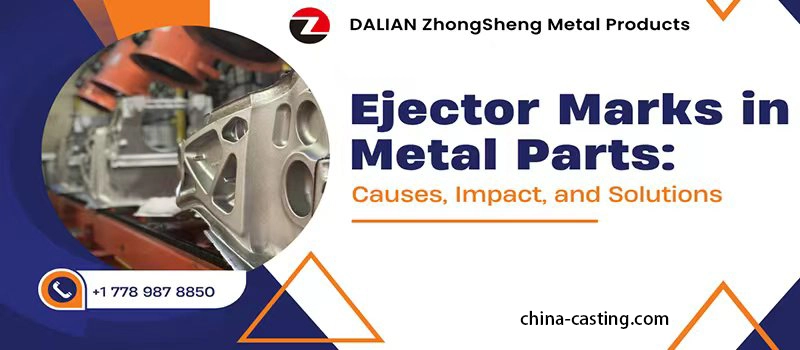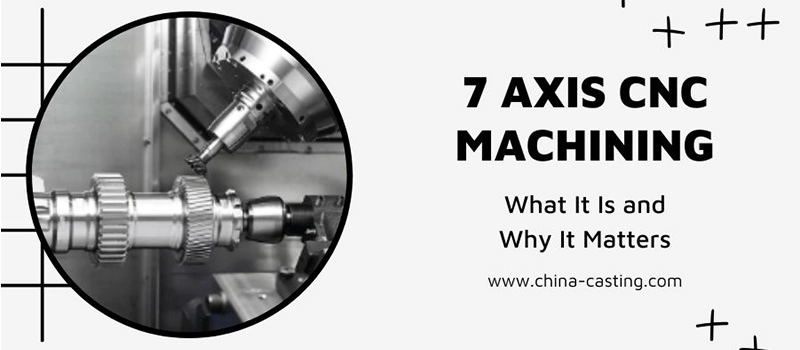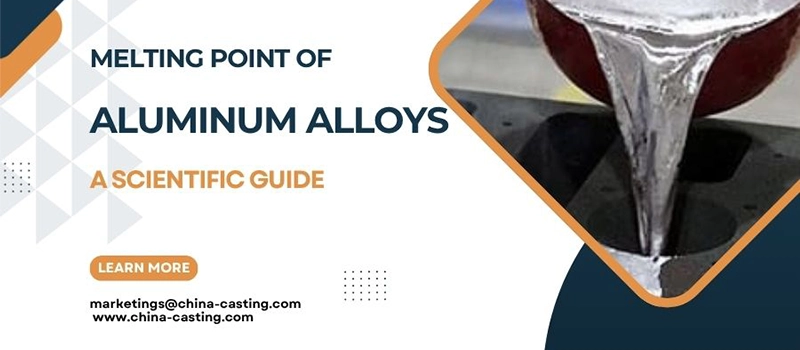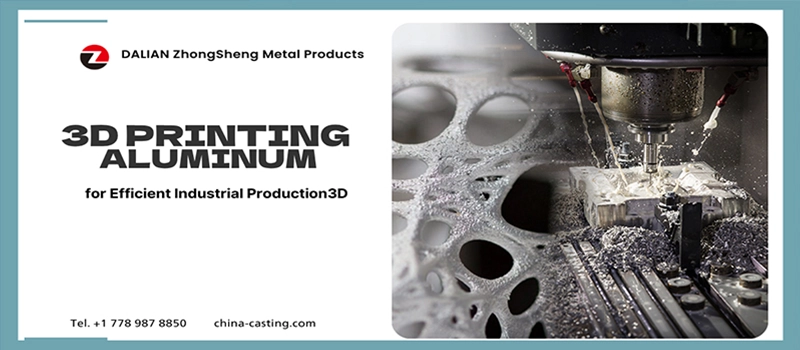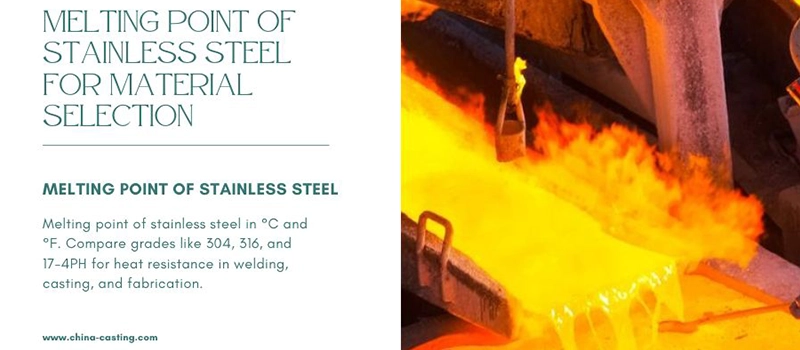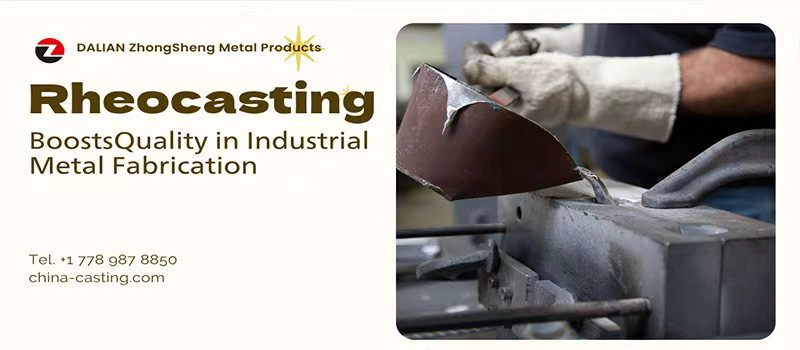Is your project stuck because you can’t find the right custom metal fabrication service? Are you worried about poor fit, missed deadlines, or unexpected costs eating into your budget? Frustrated with suppliers who promise precision but deliver problems instead?
Custom metal fabrication doesn’t have to be complicated. Whether you’re in construction, agriculture, mining, or automotive manufacturing, working with the right fabricator can simplify your entire process—from design to delivery. With the right partner, you get tailored components, consistent quality, and cost-effective solutions that keep your operations on track.
The good news? Industrial metal fabrication can be smooth, efficient, and even inspiring—when you know what to look for. In this guide, I’ll walk you through the essentials: materials, design tips, quality control, certifications, and how to avoid costly mistakes. Let’s simplify custom metal fabrication—together.
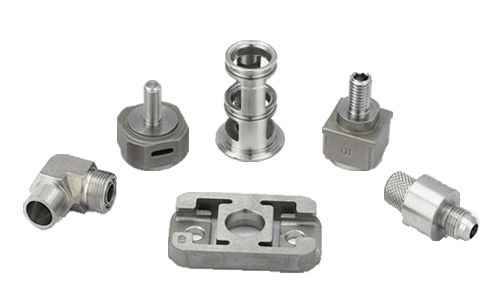
Get a quote now!
What Is Custom Metal Fabrication and Why It Matters
In the world of manufacturing, custom metal fabrication is the foundation of countless innovations. Unlike off-the-shelf metal parts, custom fabrication involves designing and producing metal components tailored specifically to a project’s unique functional and structural requirements. This precision approach ensures that every part fits perfectly, performs reliably, and meets strict industrial specifications.
Custom metal fabrication combines technical design, material science, and cutting-edge processes like laser cutting, CNC machining, stamping, and welding to create components that are as unique as the machinery or systems they’re meant to support. Whether it’s for agricultural machinery, automotive frames, mining tools, or industrial enclosures, the advantage of customization lies in its ability to align metal components with real-world applications down to the millimeter.
As the demand for precision sheet metal fabrication, stainless steel metal fabrication, and architectural metal fabrication increases globally, industries are looking for fabricators who can offer custom solutions at scale, backed by high-quality standards like CE certification and GPSR compliance. This is not just about cutting and welding metal—it’s about engineering reliability, efficiency, and longevity into your operations.
For industrial buyers, the stakes are high. A poorly fabricated part can delay production lines, inflate maintenance costs, or even pose serious safety risks. That’s why choosing the right partner for custom metal fabricating is essential. You need someone who understands not just the materials, but also your timeline, budget, and industry-specific challenges.
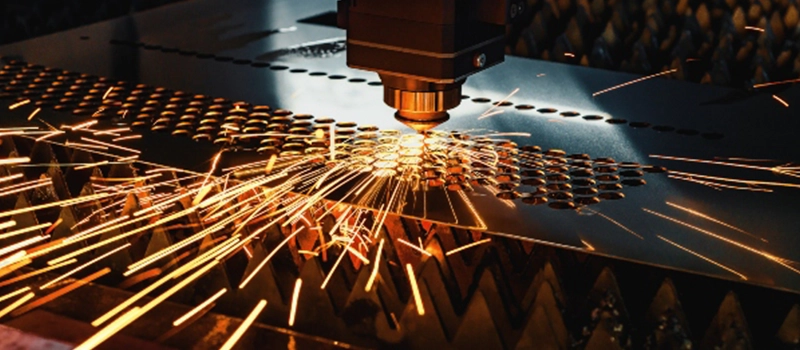
Whether you’re designing from scratch or improving existing equipment, custom metal fabrication services allow full control over dimensions, strength, surface treatment, and more. And when done correctly, the results speak for themselves: stronger systems, better performance, and lower lifecycle costs.
Understanding the End-to-End Metal Fabrication Process
The custom metal fabrication process isn’t just about bending or welding metal. It’s a carefully coordinated, step-by-step system that transforms raw material into high-performance parts tailored to exact requirements. Whether you’re ordering a one-off prototype or thousands of precision components, understanding this full cycle is key to making informed decisions and avoiding costly delays.
🔧 1. Design & Engineering
Everything begins with a design. At this stage, we work with CAD (Computer-Aided Design) and CAM (Computer-Aided Manufacturing) software to create detailed drawings and 3D models. This digital blueprint ensures every measurement, hole, and joint is accurate before material is ever touched.
A good design must balance function, manufacturability, and cost. Optimizing tolerances and reducing unnecessary complexity at this phase can dramatically cut production costs and reduce waste. This is where design for manufacturability (DFM) plays a vital role.
🔩 2. Material Selection & Procurement
Choosing the right material is crucial. Stainless steel, carbon steel, aluminum, brass, and copper are among the most commonly used metals. Each has its own advantages:
- Stainless steel: Corrosion resistance and strength
- Aluminum: Lightweight, conductive, and malleable
- Carbon steel: Cost-effective and strong
- Brass and copper: Electrical conductivity and aesthetic appeal
Your industry, product application, environment, and budget all influence material selection. At this stage, reputable metal fabrication companies source certified raw materials from trusted suppliers to ensure compliance with quality and safety standards.
🔪 3. Cutting & Shaping
With design and materials ready, fabrication begins. Cutting is often the first step—performed using:
- Laser cutting: Ideal for high-precision jobs
- Plasma cutting: Fast and cost-effective for thicker metals
- Mechanical cutting tools: Shears, saws, and punches for basic shaping
Once cut, metal parts are formed, bent, or rolled using press brakes and other machinery. Complex 3D shapes can be created through CNC machining, stamping, or rolling processes, depending on the part’s geometry.
🔩 4. Assembly & Joining
Now, it’s time to bring it all together. Custom parts are assembled and permanently joined using:
- TIG/MIG welding
- Riveting or bolting
- Adhesives (for some specialty parts)
Skilled welders ensure the structural integrity of each joint, often guided by welding blueprints or robotic automation in high-volume production.

🧼 5. Finishing
Once assembled, parts undergo finishing processes to improve function, appearance, or corrosion resistance. This may include:
- Powder coating or painting
- Galvanizing or anodizing
- Polishing or sandblasting
Some clients require a cosmetic finish for commercial-grade products, while others prioritize anti-corrosion treatment for outdoor or marine environments.
📏 6. Inspection & Quality Control
Every finished component goes through quality assurance (QA) procedures. This might include:
- Dimensional inspections
- Material testing
- Surface quality evaluation
- Stress and pressure testing
A reliable supplier will follow strict ISO and CE quality protocols, supported by traceability records and certification logs, especially for industrial metal fabrication projects exported to regulated markets.
📦 7. Packaging & Logistics
Last but not least, the parts are carefully packaged—often with foam inserts, moisture barriers, or custom crates—to avoid damage during transit. Export documentation, Incoterms, and shipping method (air, sea, or rail) are finalized according to your delivery timeline and cost target.
By understanding this full-cycle process, you’ll not only gain control over project quality and budget but also communicate more effectively with your metal fabricator.
Popular Materials Used in Custom Metal Fabrication
Choosing the right material is one of the most critical steps in any custom metal fabrication project. It directly impacts the part’s strength, weight, durability, appearance, corrosion resistance, and overall cost. Whether you’re fabricating components for industrial equipment, automotive applications, or construction structures, material selection must align with the operating environment and performance expectations.
Let’s break down the most commonly used metals in the fabrication industry and how they fit into different project scopes.
🧱 1. Stainless Steel
Stainless steel is a top choice in custom fabrication due to its high strength, corrosion resistance, and aesthetic finish. It’s widely used in:
- Food processing machinery
- Medical devices
- Petrochemical components
- Outdoor enclosures
Grades like 304 and 316 offer great formability and corrosion resistance, especially in humid or chemical-heavy environments. While more expensive than carbon steel, it pays off with low maintenance and long service life.
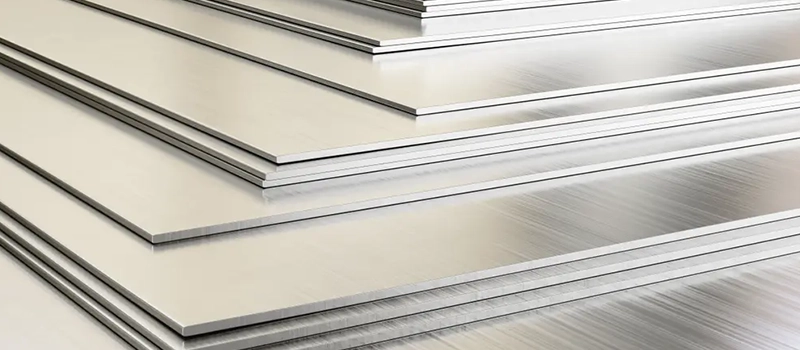
⚙️ 2. Carbon Steel
This is one of the most affordable and versatile materials for metal fabrication. It’s easy to weld, shape, and machine, making it perfect for:
- Structural frames
- Agricultural machinery
- Automotive chassis
- Industrial tooling
Though carbon steel is prone to rust, it can be protected through painting, galvanizing, or powder coating.
🪶 3. Aluminum
Aluminum is lightweight, corrosion-resistant, and ideal for projects that require mobility or high conductivity. It’s often selected for:
- Aerospace parts
- Electronics casings
- Transportation equipment
- Solar panel mounting systems
Grades like 5052 and 6061 are commonly used in sheet metal applications. Aluminum’s lower melting point allows faster processing, reducing energy costs.
🔌 4. Copper and Brass
Copper offers excellent thermal and electrical conductivity, making it a go-to material for:
- Electrical components
- HVAC systems
- Decorative architectural elements
Brass, an alloy of copper and zinc, combines conductivity with elegance and is often used for aesthetic fittings, signage, and hardware in both commercial and architectural metal fabrication.
🧪 5. Specialty Alloys and Exotic Metals
For high-performance industrial projects, some customers request specialty metals such as:
- Titanium: Extremely strong and lightweight, ideal for aerospace and defense
- Nickel alloys: Used in extreme-temperature environments like power plants
- Tool steel: Designed for wear resistance and hardness, often used in dies and forming tools
While these materials come at a premium, they are indispensable in high-stress environments and critical systems.
Need Help? We’re Here for You!
🧠 How to Choose the Right Material
When selecting materials for custom metal fabrication, consider the following:
| Criteria | Why It Matters |
|---|---|
| Operating environment | Will it face moisture, salt, heat, or chemicals? |
| Mechanical stress | Will it need to withstand force, impact, or load? |
| Weight considerations | Is lightweight design essential? |
| Cost | What’s the balance between performance and budget? |
| Appearance and finish | Is visual appeal important? |
| Machinability and weldability | Can the material be efficiently cut and joined? |
A knowledgeable sheet metal fabricator or custom metal parts supplier should help you select the most appropriate metal for your application, factoring in performance, lead time, and supply chain conditions.
Choosing the wrong material can lead to cracking, corrosion, early failure, or excess cost. Get it right from the beginning, and you’ll avoid expensive reworks or downtime.
Key Fabrication Techniques Used by Modern Metal Fabricators
Once the design is approved and materials are selected, it’s time to bring your custom metal part to life. This is where fabrication techniques come in. Modern metal fabricators use a combination of time-tested methods and cutting-edge technology to shape, form, and join metal with precision and efficiency.
Each technique serves a unique purpose—and when done right, they ensure your parts meet exact specs, perform reliably, and look great.
🔪 1. Cutting
The first step in most projects is cutting the raw material down to size. Depending on the material type, thickness, and required precision, different cutting methods are used:
- Laser Cutting: Highly accurate and clean cuts, ideal for complex shapes in sheet metal. Great for stainless steel and aluminum.
- Plasma Cutting: Fast and cost-effective, especially for thick carbon steel parts.
- Waterjet Cutting: Perfect for delicate materials or when no heat distortion is allowed.
- Mechanical Cutting Tools: Shears, saws, and punches are used for simpler or lower-volume jobs.
These methods form the backbone of sheet metal fabrication services, and selection depends on part tolerances, finish requirements, and production speed.
🔧 2. Bending & Forming
Once cut, flat sheets or bars are bent into their desired shapes using:
- Press Brakes: The most common bending machine for sheet metal, capable of tight angles and smooth curves.
- Roll Forming: Used to make long, continuous bends—common in HVAC or roofing panels.
- Stamping & Punching: For high-volume production, automated stamping presses can form holes, shapes, and patterns quickly.
Forming allows parts to achieve structural integrity and dimensional stability. It’s often used in precision sheet metal fabrication for enclosures, brackets, or casings.

🔩 3. Welding & Joining
Joining is where strength meets craftsmanship. Depending on the application, fabricators may use:
- MIG Welding (Metal Inert Gas): Ideal for thick metals and high-speed work.
- TIG Welding (Tungsten Inert Gas): Offers fine, precise welds—used in stainless steel and aluminum.
- Spot Welding: Fast and efficient for sheet metal assemblies.
- Fasteners & Rivets: For removable or adjustable assemblies.
Welding and metal fabrication go hand-in-hand, and the quality of the joint can make or break a project. Skilled welders ensure structural soundness and aesthetics—critical in both industrial and commercial metal fabrication.
✨ 4. Finishing
After fabrication and assembly, the final touch is finishing. This step improves durability, appearance, and performance:
- Powder Coating & Painting: Adds corrosion resistance and color.
- Polishing & Brushing: Enhances visual appeal—important for visible surfaces.
- Anodizing: Primarily for aluminum, improving surface hardness and corrosion resistance.
- Galvanizing: Applying a zinc coating to protect steel from rust.
Finishing is essential for custom sheet metal fabrication, especially in industries like architecture, where the final look is just as important as function.
💡 5. CNC Machining & Automation
Precision matters in metal fabrication—and automation ensures repeatability. Advanced fabricators now use:
- CNC Milling and Turning: For high-accuracy cutting, drilling, and shaping.
- Robotic Welding: Increases efficiency and consistency in high-volume orders.
- Laser Engraving: Adds part numbers, logos, or compliance marks.
- Automated Assembly Systems: Reduce labor cost and human error.
These techniques are particularly useful in industrial metal fabrication, where speed, scale, and accuracy drive performance.
From initial cut to final coat, mastering these fabrication techniques is what sets top-tier custom metal fabricators apart from the rest. These methods not only ensure strength and durability but also reduce waste, improve consistency, and shorten turnaround times.
Need Help? We’re Here for You!
Custom Fabrication Design Tips to Save Time and Money
Design is where every custom metal fabrication project either sets itself up for success—or for costly mistakes. Whether you’re designing parts for construction, mining, agriculture, or machinery, every cut, bend, and hole must be planned with manufacturability in mind. Good design can lower costs, speed up production, and reduce error rates during fabrication.
As a factory with decades of experience in custom metal fabricating, I’ve seen firsthand how thoughtful design transforms production efficiency.
🛠️ 1. Design for Manufacturability (DFM)
The most important principle in custom metal fabrication design is Design for Manufacturability. This means designing parts in a way that makes them easier and cheaper to fabricate. Avoid overly tight tolerances, unnecessary complexity, or shapes that require specialized tools. For example:
- Use standard bend radii to reduce press brake setup time
- Design parts that can be cut and bent with fewer setups
- Avoid deep or narrow slots that slow down laser cutting
The simpler the part, the faster and more affordable the production.
📐 2. Minimize Welding and Secondary Assembly
While welding and metal fabrication go hand-in-hand, not every project needs extensive welding. Smart design choices like incorporating bends instead of separate welded sections can:
- Reduce labor time
- Improve structural integrity
- Lower the chance of heat distortion
Custom metal fabrication services that use robotic welding can be efficient, but reducing the need for welding in the first place is even better.
💡 3. Material Optimization
Choosing the right sheet size, thickness, and material grade impacts both price and production time. Communicate with your metal fabricators early to avoid material waste. Custom parts should be designed to nest efficiently in raw sheet layouts—this allows for better material yield and lower scrap rates.
If you’re unsure, your custom sheet metal fabricator should help evaluate which material dimensions and alloys will work best for your order.
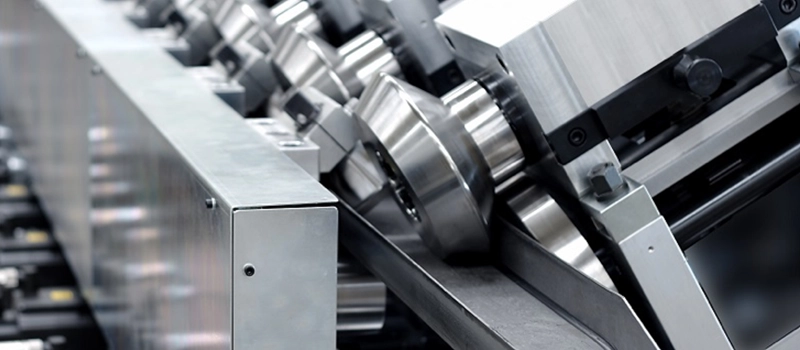
🧮 4. Cost-Efficient Tolerances
Yes, precision matters—but overengineering it can drain your budget. Specify tight tolerances only where necessary. Let your fabricator know where ±0.1mm is critical and where ±1mm will do. High-end custom metal fabrication companies use precision CNC and laser cutting, but looser tolerances in non-critical areas allow for faster production and lower cost.
📊 5. Communicate Early and Often
Clear communication with your metal fabrication supplier is essential. Always provide 2D drawings with dimensions, hole sizes, tolerances, and finishes. A 3D CAD model is helpful, but it’s not enough. The more detail you include, the fewer questions arise during production.
Make sure to ask your custom metal fabricators for design review feedback. A good supplier will alert you to red flags before cutting begins—and that could save you thousands.
⚙️ 6. Design for Assembly
When designing complex systems made from multiple fabricated parts, consider how they will be assembled. Use tab-and-slot alignment features to simplify manual assembly. Where possible, design modular parts that can be assembled in stages or off-site.
This strategy, often used by industrial metal fabricators, reduces in-field labor costs and streamlines the production process.
Smart design is not just good engineering—it’s good business. By aligning your design with fabrication realities, you reduce lead times, avoid rework, and save on material and labor costs.
Common Challenges in Custom Metal Fabrication—and How to Overcome Them
Even with a perfect design and quality materials, custom metal fabrication projects can still run into issues. In fact, challenges like miscommunication, poor tolerances, long lead times, and shipment delays are more common than you might think—especially when working with overseas metal fabricators.
Need Help? We’re Here for You!
As someone who’s managed thousands of custom metal fabrication services, I know that anticipating problems is the key to solving them before they cost you time and money. Let’s walk through the most common challenges and how to avoid them.
🗂️ 1. Incomplete or Ambiguous Drawings
One of the top reasons a custom metal fabrication project gets delayed is unclear documentation. A missing tolerance, no callout on material type, or an undefined finish can bring production to a halt.
✅ Solution: Always provide complete 2D drawings with dimensioning, material spec, finish requirements, and tolerances. If you’re unsure, your custom metal fabricator can assist with a design-for-manufacturing (DFM) review.
⏱️ 2. Extended Lead Times
The fabrication process—from material sourcing to production to shipping—can take several weeks. Add customs clearance or unforeseen production issues, and delivery gets pushed back.
✅ Solution: Plan early. Discuss your deadline during quotation. Ask for a production timeline and lead time estimate from your custom metal fabrication supplier. The best fabricators build buffer time into every order.
⚠️ 3. Tolerance and Fit Issues
Improper tolerancing is a major reason parts don’t fit together properly. Either the customer has over-specified tolerances unnecessarily, or the fabricated metal products don’t meet the required spec.
✅ Solution: Work with experienced custom metal fabricators who use precision sheet metal fabrication tools like CNC machines, laser cutters, and certified inspection systems. Also, only request tight tolerances where functionally necessary.
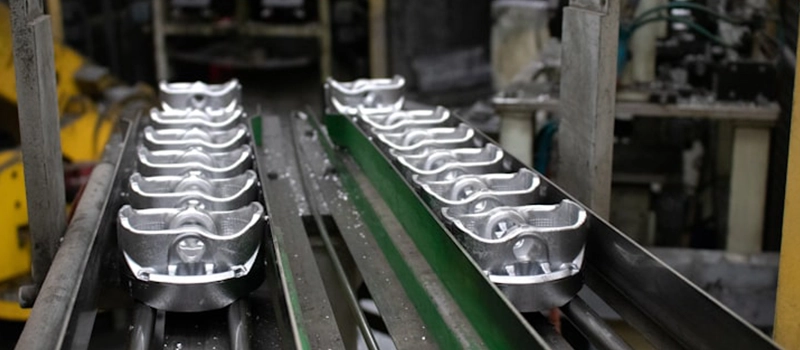
📞 4. Miscommunication Between Buyer and Fabricator
Language barriers, time zone delays, or vague terminology can all cause confusion. Misunderstood expectations lead to errors in parts, materials, and finishes.
✅ Solution: Choose a custom metal fabrication company with multilingual engineering support, 24/7 communication, and documented processes. Keep written records of all changes and approvals.
🚚 5. Shipping Damage
Even perfectly fabricated parts can arrive damaged if not packaged correctly. This is especially risky for precision or cosmetic components in sheet metal fabrication.
✅ Solution: Work only with custom metal fabrication services that use protective packaging, foam inserts, moisture barriers, and custom crates. Ask about their export packaging standards and Incoterm options.
📉 6. Quality Control Failures
Poor-quality welding, unfinished edges, or coating defects can make a part unusable. The most dangerous problems are those discovered after the part is already in the field.
✅ Solution: Choose metal fabrication companies that perform in-house inspections, offer quality assurance documentation (e.g. CE or ISO), and provide photos or videos before shipment.
🧾 7. Price Surprises After Quotation
Hidden fees like tooling charges, rush processing, or unclear shipping quotes can drive up your total cost.
✅ Solution: Get a full breakdown from your custom metal fabrication supplier—materials, labor, finishing, tooling, and shipping. Ask for clarity on Incoterms (e.g., FOB vs. DDP) and payment terms before placing your order.
With the right supplier and a proactive approach, you can overcome nearly any challenge in the custom metal fabrication process. Transparency, collaboration, and experience make all the difference when it comes to success.
How to Choose the Right Custom Metal Fabrication Partner
Choosing the right partner for your custom metal fabrication needs can be the difference between success and disaster. Whether you’re sourcing one-off prototypes or managing a full-scale industrial production run, the quality, precision, and reliability of your supplier determines everything—from the strength of your components to the speed of your operations.
Over the years, I’ve worked with buyers from agriculture, automotive, mining, and construction industries, and I can tell you: not all metal fabrication companies are built the same. Let’s explore what to look for in a trustworthy custom metal fabrication supplier.

Get a quote now!
🏭 1. In-House Capabilities
Look for a supplier that owns and operates their own facility. Many so-called “fabricators” are actually just brokers who outsource your order. A true custom metal fabricator should have:
- Multiple fabrication processes under one roof (cutting, welding, forming, etc.)
- CNC and laser equipment for precision metal fabrication
- Surface finishing capabilities (e.g., powder coating, galvanizing)
- Packaging, inspection, and export readiness
A vertically integrated custom sheet metal fabricator offers better quality control, faster lead times, and lower total costs.
📜 2. Certifications and Compliance
When exporting to regions like Europe or North America, compliance matters. Reliable custom metal fabrication services should meet or exceed industry standards such as:
- CE Certification for EU market access
- GPSR (General Product Safety Regulation) compliance
- ISO 9001: Quality Management
- Welding certifications (e.g., AWS or EN)
- Material traceability documentation
Ask to see valid certificates and don’t hesitate to verify them with the issuing bodies. For instance, our factory works under CE and GPSR regulations with an EU Authorized Representative based in Germany.
📩 3. Clear Communication and Responsiveness
The best custom metal fabrication companies communicate clearly and quickly. Delays in answering questions, vague replies, or missing documentation are red flags. Look for:
- Multilingual engineers and sales staff
- Prompt email replies and open communication channels
- Willingness to provide technical support or DFM suggestions
- A transparent quoting process
Professional metal fabricators will clarify every detail before fabrication begins—ensuring there are no surprises later.

📦 4. Packaging and Logistics Capabilities
A reliable custom metal fabrication supplier knows that good parts are only valuable if they arrive safely. Confirm their ability to handle:
- Export packaging standards (foam, wood crates, anti-rust treatment)
- Shipping by air, sea, or express depending on urgency
- Customs documentation and Incoterms (EXW, FOB, CIF, DDP)
- Tracking, insurance, and delivery confirmation
Shipping issues can destroy an otherwise perfect project. Your fabricated metal products deserve professional handling every step of the way.
🔁 5. Experience with Similar Projects
Ask your potential custom metal fabricators for case studies or photos of past work—especially in your industry. Fabricating parts for heavy-duty agriculture isn’t the same as doing stainless steel housings for electronics.
Find a fabricator who understands your sector’s needs and speaks your technical language. They should be familiar with industrial standards, design constraints, and common failure points.
🔎 6. Post-Sales Support
What happens after delivery? Can you reorder easily? Will they resolve quality concerns quickly? The best custom metal fabrication companies stand behind their work. Look for:
- Repeat order support with updated records
- Fast response to feedback or claims
- Willingness to adjust or rework if needed
- Spare part manufacturing or backup tooling
In short, the ideal custom metal fabrication partner is not just a vendor—they’re a strategic ally. Choose a team that aligns with your business goals, communicates transparently, and delivers the right product at the right time, every time.

Get a quote now!
Cost Breakdown: How to Control Expenses in Custom Metal Fabrication
When it comes to custom metal fabrication, pricing can be a puzzle. Two quotes for the same part might differ dramatically—why? The truth is, multiple variables influence the final cost of a fabricated metal product, from raw materials to finishing, labor, and shipping.
As an industry insider, I’ve seen buyers overpay for years simply because they didn’t understand the price structure. Let me break it down for you and show you how to save money—without cutting corners on quality.
💰 1. Material Selection and Thickness
Material cost is often the largest chunk of a custom metal fabrication budget. Stainless steel, aluminum, carbon steel, and brass each come with different price points. Key factors include:
- Type of metal (aluminum is usually cheaper than stainless steel)
- Grade (304 vs. 316 stainless, for example)
- Sheet size and thickness
- Market volatility (metal prices fluctuate monthly)
✅ Tip: Consult with your fabricator early. A small change in thickness (e.g., 2.0mm to 1.5mm) may lower cost significantly without sacrificing performance.
👷 2. Labor and Machine Time
Custom parts require skilled workers and machine setup time. Complex geometry, tight tolerances, or multiple bends can drive up cost quickly.
Here’s what adds labor cost:
- Intricate bending or forming
- TIG welding instead of MIG
- Tight tolerances requiring manual fitment
- Secondary operations (tapping, countersinking, deburring)
✅ Tip: Optimize your design. Avoid overengineering. Reducing the number of welds or simplifying hole layouts can cut labor time in half.
⚙️ 3. Tooling and Setup Charges
In custom metal fabrication, initial setups matter. Some processes—like punching or stamping—require custom dies or jigs, which are billed separately.
✅ Tip: Ask for tooling amortization over large batches, or explore laser cutting instead, which often doesn’t need custom dies.
🎨 4. Surface Finishing
Finishes like powder coating, anodizing, or zinc plating add durability and aesthetics but also increase cost. Large flat surfaces, bright colors, or multi-step coatings can raise your price.
✅ Tip: Specify finishing only on visible or exposed areas. Skip unnecessary coatings on hidden components.
🚚 5. Packaging and Shipping
Shipping is a common hidden cost in custom sheet metal fabrication, especially for large or heavy items. International freight, fuel surcharges, and customs paperwork can quickly stack up.
✅ Tip: Plan your shipment in bulk to lower per-unit freight. Request space-optimized packaging to reduce volume. And always clarify Incoterms (FOB, CIF, DDP, etc.) with your supplier.
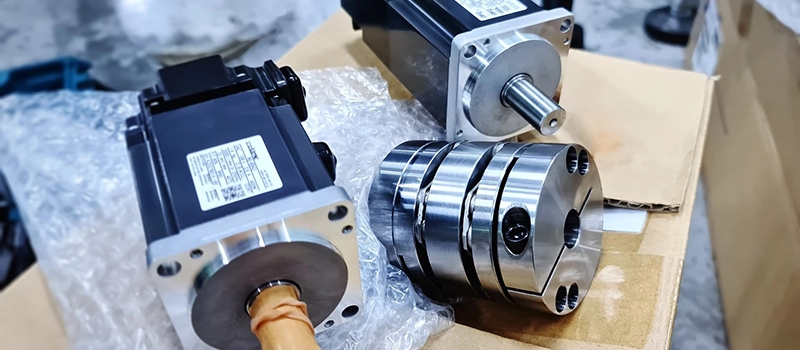
🧾 6. Minimum Order Quantity (MOQ)
Some metal fabrication companies require MOQs to justify machine setup time. Ordering too small can inflate your per-piece price dramatically.
✅ Tip: If possible, consolidate part orders or increase quantity to meet price breaks. Ask your custom metal fabricator if parts can be grouped across projects.
🔍 7. Quality Rework and Scrap
Poor planning can lead to errors—and redoing a bad part costs more than doing it right the first time.
✅ Tip: Always verify drawings, check tolerances, and review material specs with your metal fabricators before production. It’s far cheaper to catch mistakes on paper than on the shop floor.
📊 Example Cost Breakdown (Per Unit)
| Cost Component | % of Total Cost | Notes |
|---|---|---|
| Material | 30–40% | Based on metal type and thickness |
| Labor & Setup | 25–35% | Depends on complexity and finish |
| Surface Treatment | 10–15% | Varies with type of coating |
| Packaging & Logistics | 10–20% | Higher for international shipments |
| Tooling (if required) | 5–10% | For dies, jigs, and fixture prep |
A trustworthy custom metal fabrication company will always offer a transparent cost structure—and will even help you reduce cost through smarter material choices, better design, or efficient packaging.
Quality Control and Certifications in Custom Metal Fabrication
In the global world of custom metal fabrication, quality isn’t optional—it’s essential. Whether you’re supplying industrial machinery, construction components, or custom brackets for automotive use, your fabricated parts must meet strict performance, safety, and compliance standards. That’s where quality control and certification come into play.
Every professional custom metal fabrication company should have formalized procedures to inspect, test, and verify your products before they leave the factory. This ensures every part meets dimensional, functional, and safety requirements—especially when exporting to regulated markets like the EU, North America, or Japan.
Let’s break down what this involves and what certifications you should expect from a reputable metal fabricator.
Need Help? We’re Here for You!
✅ 1. Why Quality Control Matters in Custom Metal Fabrication
Poorly fabricated metal parts can lead to:
- Assembly delays
- Product failures in the field
- Warranty claims or returns
- Safety risks
- Legal liability or regulatory fines
That’s why every custom metal fabrication service should include end-to-end quality assurance (QA) measures, including:
- First article inspection (FAI)
- In-process quality checks
- Final dimensional inspection
- Visual inspection for welds, coatings, and finishes
- Material verification (certificates of conformity)
Reliable metal fabrication companies document every step and provide inspection reports upon request.
📜 2. CE Certification and GPSR Compliance
For companies exporting custom fabricated metal products to the European Union, CE marking is a must. It shows that the product meets EU safety, health, and environmental protection standards.
More importantly, from 2024 onward, compliance with the General Product Safety Regulation (GPSR) is now required. This regulation ensures that all products entering the EU are safe—even if they don’t fall under a specific EU directive.
As a manufacturer, we are officially registered under CE and GPSR compliance, with our EU Authorized Representative based in Germany. This allows our customers across Europe to import custom metal parts with confidence and transparency.
✅ Tip: Always ask your custom metal fabrication supplier for proof of CE certification and their GPSR representation status if you’re exporting to the EU.
🏅 3. ISO 9001 and Other Certifications to Look For
Beyond CE and GPSR, there are global quality standards that demonstrate excellence in custom metal fabrication:
- ISO 9001 – International quality management system
- ISO 14001 – Environmental management system
- AWS Certification – Welding standards (American Welding Society)
- RoHS Compliance – Restriction of hazardous substances
- REACH Compliance – Chemical safety for European markets
These certifications are especially relevant when producing precision sheet metal fabrication or high-risk industrial parts.
✅ Tip: Ask to see updated certificates, check the issuing body, and verify that they cover the current year.

🔍 4. Traceability and Testing
For high-spec custom metal fabrication projects, traceability is critical. Your supplier should be able to trace:
- Material origin (mill test reports)
- Process history (cutting, bending, welding, finishing)
- Operator signatures or logs
- Batch and lot numbers
Advanced metal fabricators also provide testing such as:
- Non-destructive testing (NDT)
- Salt spray corrosion resistance
- Tensile strength and hardness testing
- Weld penetration inspection
These are especially important for automotive, aerospace, and marine fabrication projects.
📁 5. Documentation You Should Receive
A professional custom metal fabrication service should include a complete quality documentation pack with your shipment:
| Document | Purpose |
|---|---|
| Certificate of Conformity | Confirms product meets spec |
| CE Declaration of Conformity | Required for EU entry |
| Material Test Reports | Verifies chemical/mechanical properties |
| Quality Inspection Reports | Confirms dimensional accuracy |
| Surface Finish Records | Confirms coating/plating results |
With the right quality system in place, custom metal fabricators can guarantee that every component you receive performs to spec and complies with your region’s laws and standards. That’s not just good manufacturing—it’s good business.
Shipping, Lead Times & Logistics Tips in Custom Metal Fabrication
Even the best-designed and flawlessly produced custom metal fabrication project can fail—if the parts don’t arrive on time. Delays in shipping or poor logistics planning can derail installation schedules, disrupt production, and increase costs.
That’s why managing the logistics side of custom metal fabrication services is just as important as managing design and quality. A good supplier should not only deliver high-precision fabricated metal products, but also make sure they’re safely packaged, shipped, and tracked until they’re in your hands.
Let’s break down the timelines, packaging, shipping methods, and best practices to help you stay ahead.
⏱️ 1. How Long Does Custom Metal Fabrication Take?
The average lead time for a standard custom metal fabrication order ranges from 2 to 6 weeks, depending on:
- Material availability
- Part complexity and quantity
- Finishing requirements
- Current factory workload
- Tooling/setup needs
Here’s a general timeline example:
| Stage | Estimated Time |
|---|---|
| Design review and DFM | 1–3 days |
| Material procurement | 3–7 days |
| Cutting/forming/welding | 5–10 days |
| Finishing and inspection | 2–5 days |
| Packaging and shipping prep | 2 days |
| Shipping (varies by method) | 3–30 days |
✅ Tip: Always ask your custom metal fabricator for a full production schedule. Build in a buffer of at least 3–5 days for unexpected slowdowns.
📦 2. Smart Packaging Saves Products and Money
Poor packaging is one of the most common causes of damaged fabricated metal products—especially for large or sharp-edged components.
A professional custom metal fabrication company should use:
- Foam inserts or protective corners
- Moisture-resistant wrapping (VCI paper, silica gel)
- Custom wood crates or steel-framed pallets for heavy parts
- Shrink wrap or strapping for bundled parts
Packaging should be designed around part weight, fragility, and transport method. You don’t want scratched stainless steel or bent aluminum panels upon arrival.
✅ Tip: Ask your fabricator to send you photos or videos of the packaged goods before shipment. It’s a standard practice in high-end custom sheet metal fabrication exports.
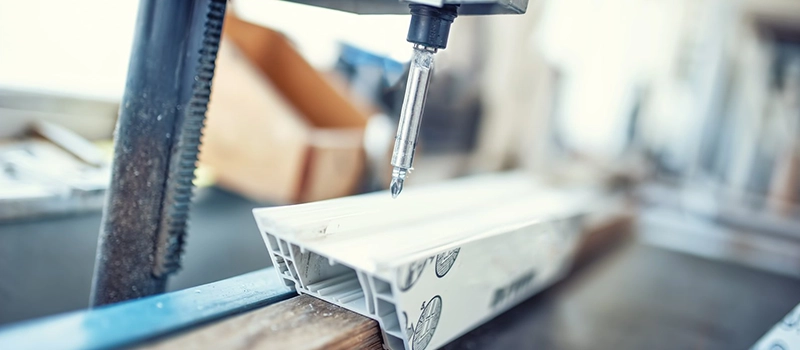
🌍 3. Understanding International Shipping Options
Custom metal fabrication services often ship globally via:
- Sea Freight (20–45 days): Best for large orders and lower cost
- Air Freight (3–7 days): Faster but more expensive
- Express Courier (DHL/UPS/FedEx): Ideal for small urgent batches
- Rail or Intermodal: Growing in popularity for Asia-Europe shipments
Also, make sure to understand Incoterms, which define responsibility between buyer and seller:
- EXW (Ex Works): Buyer handles all shipping
- FOB (Free on Board): Seller gets it to the port
- CIF (Cost, Insurance, Freight): Seller ships to buyer’s port
- DDP (Delivered Duty Paid): Seller covers all logistics and import clearance
✅ Tip: For first-time buyers, DDP is easiest. Experienced custom metal fabricators should offer multiple options and help you choose based on urgency and budget.
📄 4. Documentation for Smooth Customs Clearance
To avoid customs delays or fines, your shipment must include accurate documentation. Your metal fabricator should provide:
- Commercial Invoice
- Packing List
- Certificate of Origin
- CE or GPSR Compliance Documents (for EU)
- Bill of Lading or Air Waybill
Missing paperwork causes delays. A seasoned custom metal fabrication company will know your country’s requirements and include everything needed.
✅ Tip: Make sure your business is registered for import (EORI for EU, EIN for US, etc.), and have a customs broker ready if needed.
📦 5. Trackability and Post-Shipment Support
A high-quality custom metal fabricator should send tracking numbers, estimated arrival times, and shipping updates. Bonus points if they proactively follow up after delivery.
Managing logistics in custom metal fabrication isn’t an afterthought—it’s a critical part of the process. With the right packaging, documentation, and freight strategy, you can ensure that your parts arrive on time, in perfect condition, and ready to go to work.
How Dalian ZhongSheng Metal Products Solves Real Challenges in Custom Metal Fabrication
At Dalian ZhongSheng Metal Products, custom metal fabrication isn’t just a service—it’s our specialty and our commitment. With five advanced production lines, full in-house capabilities, and certified quality systems, we’re trusted by industrial clients worldwide to deliver reliable, precision-engineered metal parts—on time and on budget.
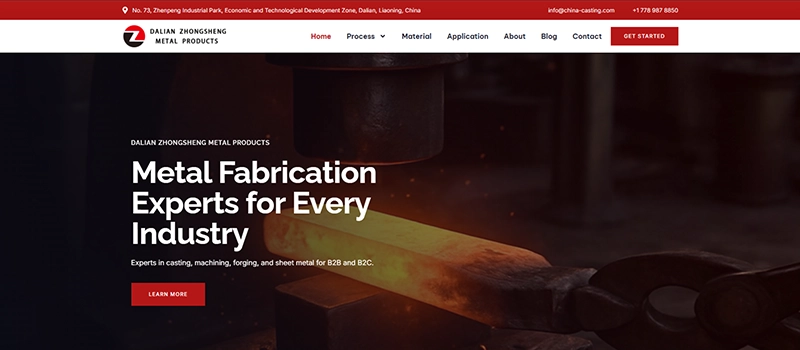
Over the years, we’ve helped companies across agriculture, automotive, mining, and construction sectors overcome serious supply chain issues, reduce fabrication costs, and improve equipment performance.
Here’s how we do it:
🏭 1. Full-Service In-House Fabrication, Start to Finish
Unlike many metal fabricators who outsource core processes, we control every step—from sheet metal fabrication to machining, welding, finishing, and assembly—within our facility. That means:
- Faster lead times
- Lower cost due to reduced outsourcing
- Direct communication with production teams
- Better control over quality and delivery
We offer custom sheet metal fabrication, machined components, forged parts, and more—all tailored to your exact drawings and specifications.
🎯 2. Personalized Engineering and DFM Guidance
Many clients come to us with designs that are functional, but not optimized for cost or speed. Our engineers provide design for manufacturability (DFM) feedback before we start production—ensuring:
- Smarter material selection
- Easier assembly
- Reduced labor and machine time
- Improved surface finishes and tolerances
That’s how we turn complex ideas into efficient, scalable custom metal fabrication solutions.
🧾 3. Full Certification for Global Trade
We are fully compliant with:
- CE Certification for the European Union
- GPSR (General Product Safety Regulation), with EU representation through EUREPSTAR GmbH in Germany
- Internal ISO-based quality systems
- CE and declaration of conformity documents for all EU-bound shipments
This ensures all fabricated metal products meet your import and compliance requirements—especially critical in regulated markets like the EU and North America.
📦 4. Reliable Packaging, Shipping, and Documentation
We understand the pain of damaged parts and customs delays. That’s why we:
- Package all products with anti-corrosion materials, foam protection, and reinforced crates
- Provide detailed commercial invoices, CE declarations, and packing lists
- Offer multiple Incoterm options: EXW, FOB, CIF, or DDP
- Work closely with freight forwarders to streamline your delivery
As a global custom metal fabrication supplier, we deliver to North America, Europe, Japan, and South Korea—on time and intact.
💬 5. Real-Time Communication and After-Sales Support
Our international sales and engineering teams are fluent in English, respond quickly, and keep you informed at every step. We also offer:
- Photo and video updates of production and packaging
- Fast quotation turnaround (typically within 24 hours)
- After-sales support for any quality issues or reorders
- Long-term cooperation for repeat orders and product development
Working with Dalian ZhongSheng Metal Products means you get a custom metal fabrication partner—not just a one-time vendor.

Get a quote now!
📈 6. Proven Track Record with Global Buyers
Our clients include wholesalers, OEM manufacturers, and industrial equipment suppliers who need:
- Competitive prices
- Dependable lead times
- Certified quality
- Scalable production
- Transparent communication
With decades of experience and hundreds of successful shipments, we’ve earned the trust of global buyers who rely on us to keep their businesses moving.
If you’re looking for a factory that combines professional production with reliable support, Dalian ZhongSheng Metal Products is your one-stop solution for custom metal fabrication at scale.
More Insights and Future Trends in Custom Metal Fabrication
The custom metal fabrication industry is evolving rapidly. Driven by digital innovation, sustainability goals, and rising global demand for precision-engineered components, fabricators and industrial buyers alike are adapting to new methods, materials, and markets.
At Dalian ZhongSheng Metal Products, we’re not just following these trends—we’re actively building toward them. Here’s what you can expect from the future of custom metal fabrication.
🤖 1. Smarter, More Automated Production
Fabrication shops around the world—including ours—are investing heavily in:
- CNC automation
- Robotic welding systems
- Smart inspection machines
- AI-based production optimization
These technologies increase speed, reduce human error, and improve consistency across high-volume custom sheet metal fabrication runs. For buyers, this means faster delivery and tighter tolerances at lower costs.
🌱 2. Sustainability and Green Fabrication
Environmental responsibility is no longer optional. Governments and customers demand custom metal fabrication companies to reduce waste, lower emissions, and adopt recyclable materials.
Expect to see:
- Recyclable or low-carbon metals (e.g., green aluminum)
- Powder coating with eco-friendly materials
- Lean manufacturing practices
- Solar-powered factories and emission reduction systems
As a global supplier, we’re working toward greener production practices in our own operations to meet future demand.
🌐 3. Supply Chain Resilience and Nearshoring
Recent disruptions have forced many companies to rethink where they source custom fabricated metal parts. While offshore production remains cost-effective, more buyers are diversifying suppliers for:
- Faster delivery times
- Lower freight risk
- Currency fluctuation control
- Political stability and trade compliance
At Dalian ZhongSheng Metal Products, our flexible shipping options, multilingual teams, and logistics experience help clients de-risk their sourcing strategies without losing their price advantage.
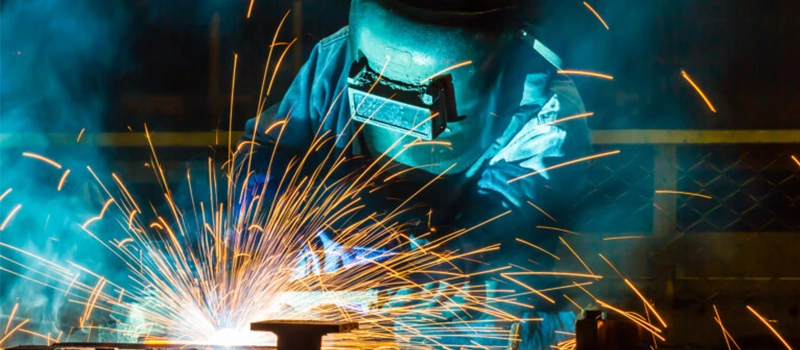
🧠 4. Digital Collaboration and Instant Quotes
The digital era is transforming how custom metal fabrication orders are placed, tracked, and repeated. Buyers now expect:
- Instant quotes via online platforms
- Interactive 3D model uploads
- Cloud-based communication and revisions
- Production dashboards and order tracking
We’re actively implementing tools to give clients faster access to pricing, real-time order status, and digital file management for repeat projects.
🔩 5. Higher Demand for Hybrid Fabrication Services
Modern clients want more than just cutting and welding. They’re looking for one-stop custom metal fabrication solutions that combine:
- Sheet metal and CNC machining
- Welding and surface finishing
- Assembly and packaging
- Custom branding and labeling
As an integrated factory, we already provide these services under one roof—helping our clients simplify procurement, reduce coordination, and accelerate delivery.
The future of custom metal fabrication is fast, flexible, and high-tech. Whether you need prototyping, mass production, or specialty fabrication, the right supplier will help you innovate, scale, and thrive in an increasingly competitive world.
✅ Conclusion: Your Success in Custom Metal Fabrication Starts Here
At the end of the day, custom metal fabrication isn’t just about metal. It’s about building trust, solving problems, and delivering results—on time, on spec, and on budget.
Whether you’re sourcing industrial parts, sheet metal components, or specialized enclosures, you need a supplier who understands your business and takes ownership of every detail.
At Dalian ZhongSheng Metal Products, we’ve built our reputation on precision, partnership, and performance. From initial design to final delivery, we are your trusted one-stop shop for professional, certified, and scalable custom metal fabrication.
Let us help you turn your vision into high-quality, high-performance reality.


